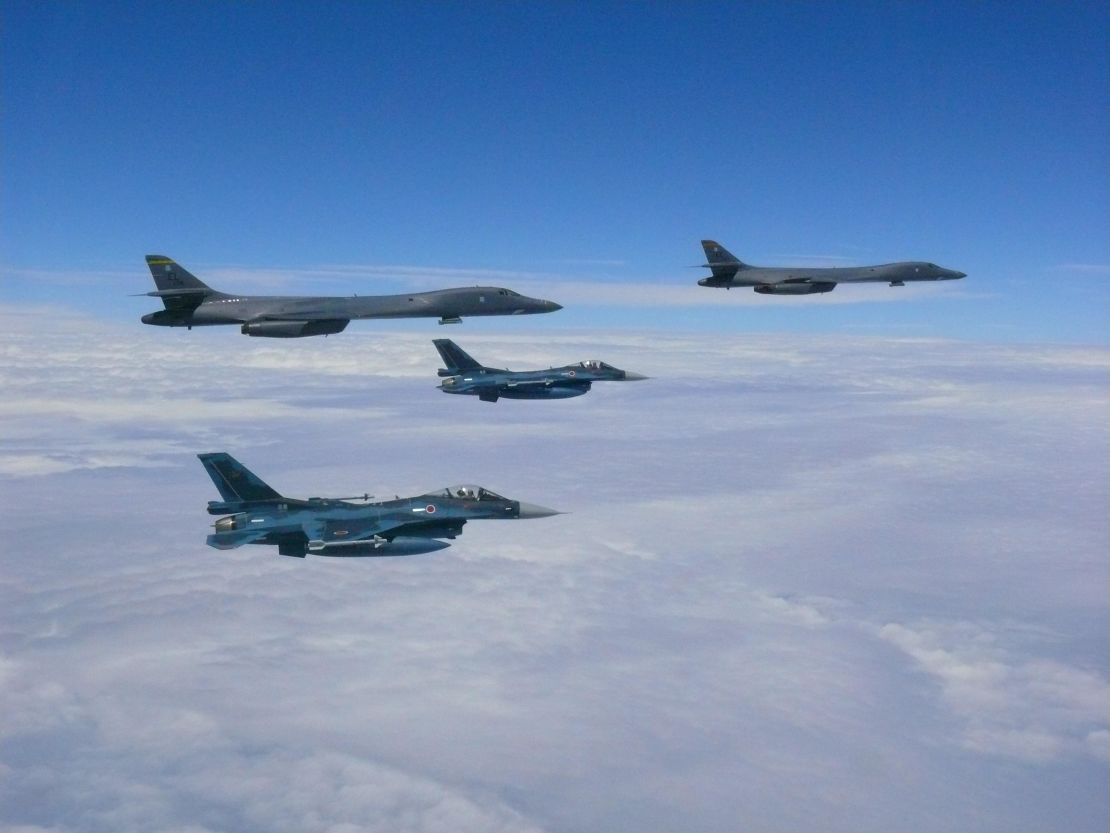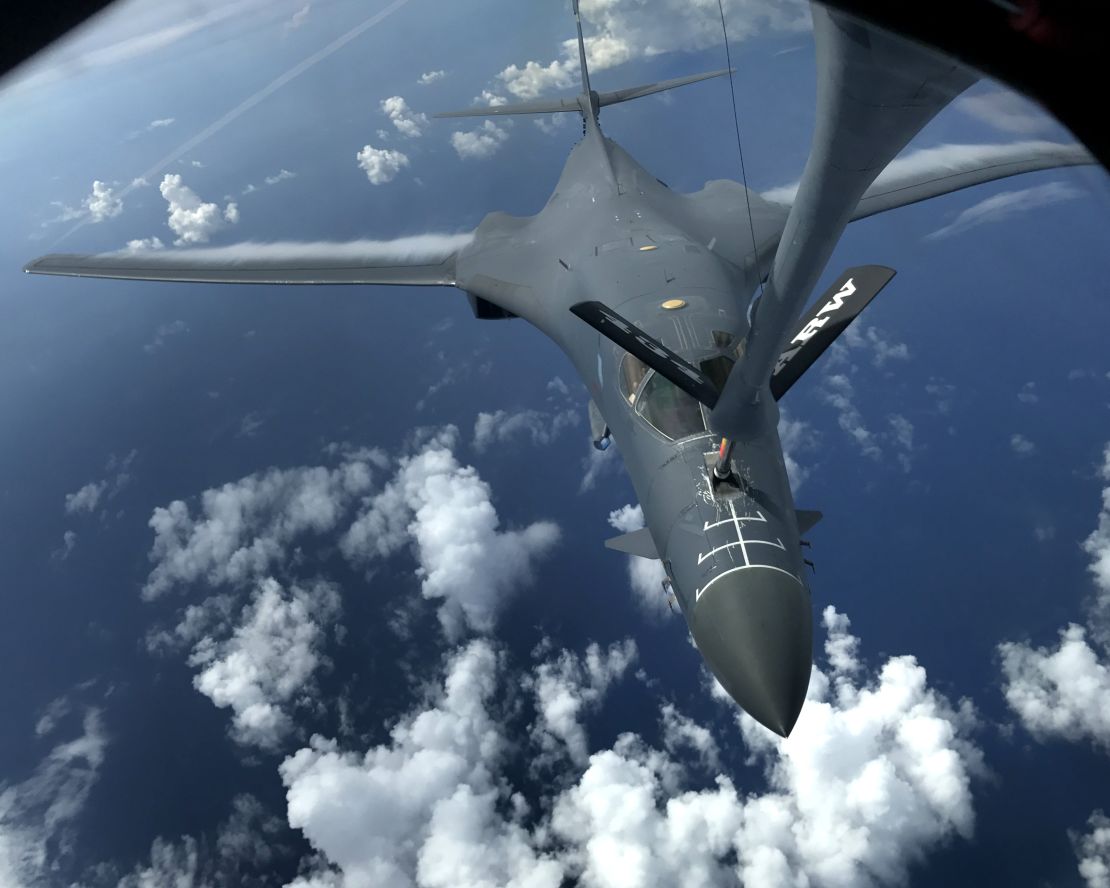Story highlights
North Korean threat against Guam comes after US bomber sorties over Korean Peninsula
Guam government says threat level has not increased following statement in North Korean state media
North Korea’s military is “examining the operational plan” to strike areas around the US territory of Guam with medium-to-long-range strategic ballistic missiles, state-run news agency KCNA said early Wednesday local time.
Specifically, the statement mentioned a potential strike on Andersen Air Force Base designed “to send a serious warning signal to the US.”
The base is one of two on the Pacific island, which are the closest bases on US soil to North Korea, and represent the westernmost tip of the country’s military might.
The North Korea comments were published after US President Donald Trump warned Pyongyang that if it continued to threaten the US, it would “face fire and fury like the world has never seen.”
‘No threat to our island’
Guam’s governor, Eddie Baza Calvo, released a video address Wednesday, reassuring the island’s residents that there was no change in the threat level resulting from North Korea.
“I want to reassure the people of Guam that currently there is no threat to our island or the Marianas,” he said.
“I also want to remind national media that Guam is American soil and we have 200,000 Americans in Guam and the Marianas. We are not just a military installation,” he added.
Speaking from Guam, journalist Robert Santos said local reaction to the threats was mixed.
“Some people are who are confident we are safe with the US bases here and others who are not so sure,” he said.
“Some people believe (Trump and Kim) are clashing personalities and they speak recklessly. But here are some people who believe… that we are completely safe regardless of what happens.”
However, he added that an attack on Guam “won’t just be against the US military, it will be against the people.”
Key military installation
Dubbed the “tip of the spear,” Guam is a key to the US military’s forward deployed presence in the Pacific and is home to thousands of American service members and their families.
Its importance has declined since the Second World War, given the creation of military bases in Japan and South Korea, says Carl Schuster, a Hawaii Pacific University professor and former director of operations at the US Pacific Command’s Joint Intelligence Center. Now it is essentially a staging area, which sees rotations of bomber groups coming through.
“Guam is the western most US territory that has major military bases. If you (were to) pull (the US) out of Japan and South Korea it’s the next best location in the Pacific,” says Schuster.
While it is around 1,500 miles further out from the Korean peninsula than its next closest base in Japan, it’s “still strategic because of its location” and its ability to host long-range bombers.
There are, however, political complications in launching attacks from US bases hosted by allies closer to Pyongyang, should the US retaliate to Kim’s latest threats.
Should US allies refuse to let the military to launch strikes from their territory, Guam would be the most likely place from which to launch airstrikes on North Korea, Schuster says, adding that this is how Kim will regard it.
A US attack using its bases on Japan’s main islands or Okinawa, for example, would bring Japan into any conflict, says Schuster.
However, “Guam’s importance is reliant on the behavior of our allies. If South Korea and Japan say we could (launch attacks) out of there, taking out Guam becomes almost meaningless.”
Defensive shield
Guam’s Homeland Security Advisor George Charfauros told CNN that despite Guam’s strategic importance and the North Korean threats to strike it, he remains confident of the island’s defenses.
“They’ve slowly developed their capabilities but we stand in high confidence with the US (Defense Department’s) ability to not only defend Guam and the surrounding areas but also the continental US… There are several layers of ballistic missile defense.”
Trump, Kim ramp up rhetoric
One of these systems, he said, is THAAD, the Terminal High Altitude Area Defense system, which is designed to shoot down short, medium and intermediate ballistic missiles.
“Two years ago a permanent deployment of that missile system was placed on Guam,” he said.
He added that the US “routinely uses” Aegis-equipped warships around the island chain of the Marianas, of which Guam is the largest.
The US Department of Defense reiterated its capability to counter North Korean aggression.
“We always maintain a high state of readiness and have the capabilities to counter any threat, to include those from North Korea,” spokesman Johnny Michael told CNN.
Escalating tensions
North Korea ramped up the rhetoric in a new statement issued Wednesday, sourced to a spokesman for the General Staff of the Korean People’s Army (KPA), which said a “preemptive strike is no longer the monopoly of the US.”
Pyongyang’s initial threat to Guam came after the US flew two B-1B bombers over the Korean peninsula on Tuesday local time.

The bombers flew out of Andersen Air Force Base in Guam as part of the US Air Force’s “continuous bomber presence,” according to an Pacific Air Forces spokesman. The bombers were joined by Japanese and South Korean aircraft during their mission.
“In the morning of August 8 the air pirates of Guam again appeared in the sky above South Korea to stage a mad-cap drill simulating an actual war,” the KCNA statement read.

Pyongyang did not develop its nuclear capability to be the aggressor in a war with the US, says CNN Military Analyst Rick Francona.
However, its most recent statements suggest that North Korea is taking a more aggressive stance – suggesting that it might attack before the US has a chance to strike.
“The North Koreans did not develop their nuclear weapons to drop on the US,” Francona told CNN. “They developed these weapons to prevent an attack from the US. Or at least that’s the rhetoric coming from Pyongyang.
“Now you’re looking at a possible strike on American territory (like) Guam, and also the mainland of the US.”
Poll: Americans uneasy about North Korea, doubt Trump’s ability to handle situation
The latest: North Korea advances its nuclear capabilities
CNN’s Jim Sciutto and Taehoon Lee in Seoul contributed to this report.






















